The B-Class Electric Drive, also known as the B-Class ED, was Mercedes-Benz’s early entry into the world of electric vehicles. Launched in the United States in 2014, it promised emission-free driving with the comfort and safety Mercedes was known for.
Backed by Tesla Motors tech—yes, the battery and electric powertrain came straight from the Model S partnership—this wasn’t a half-baked attempt. It was bold, smooth, and came with that premium Mercedes-Benz aura.
Drivers in Los Angeles and other EV-friendly cities were curious. The car looked like any other B-Class, blending in with ease, but underneath sat an electric motor offering decidedly powerful acceleration and the silent hum of electric driving. The Mercedes-Benz USA campaign at the time really pushed its eco-friendly image. But something didn’t quite click.
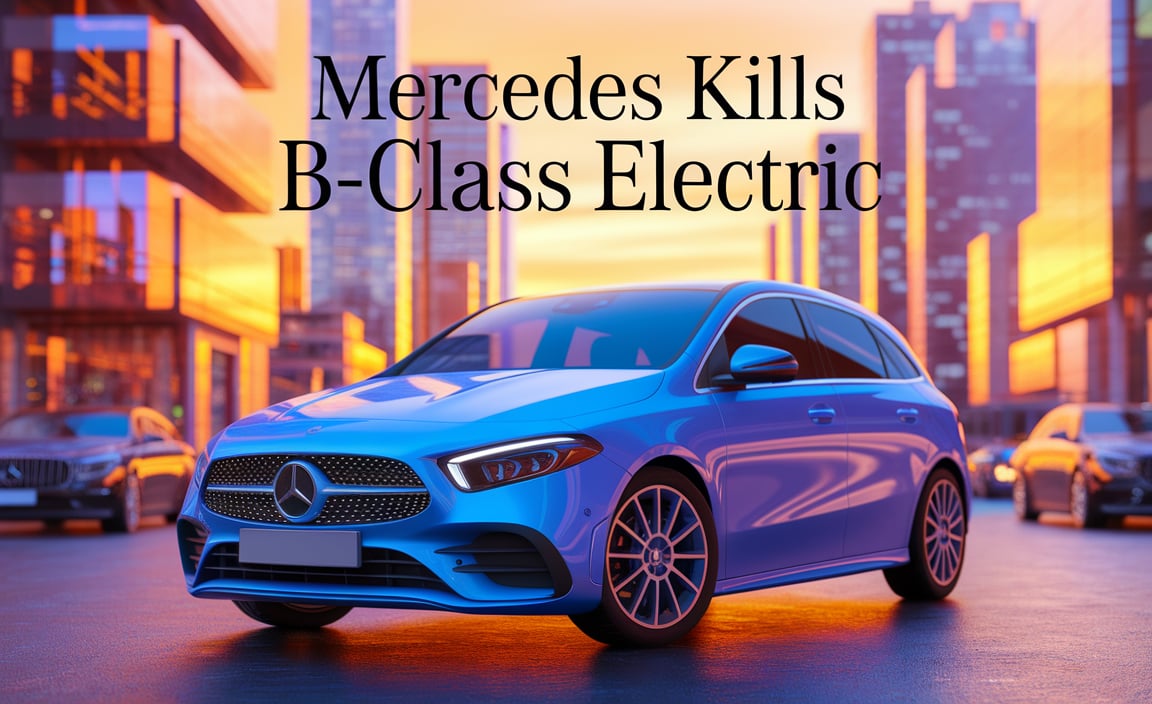
Breakdown Of What Really Led To Its Quiet Exit: How Mercedes Kills B-Class Electric
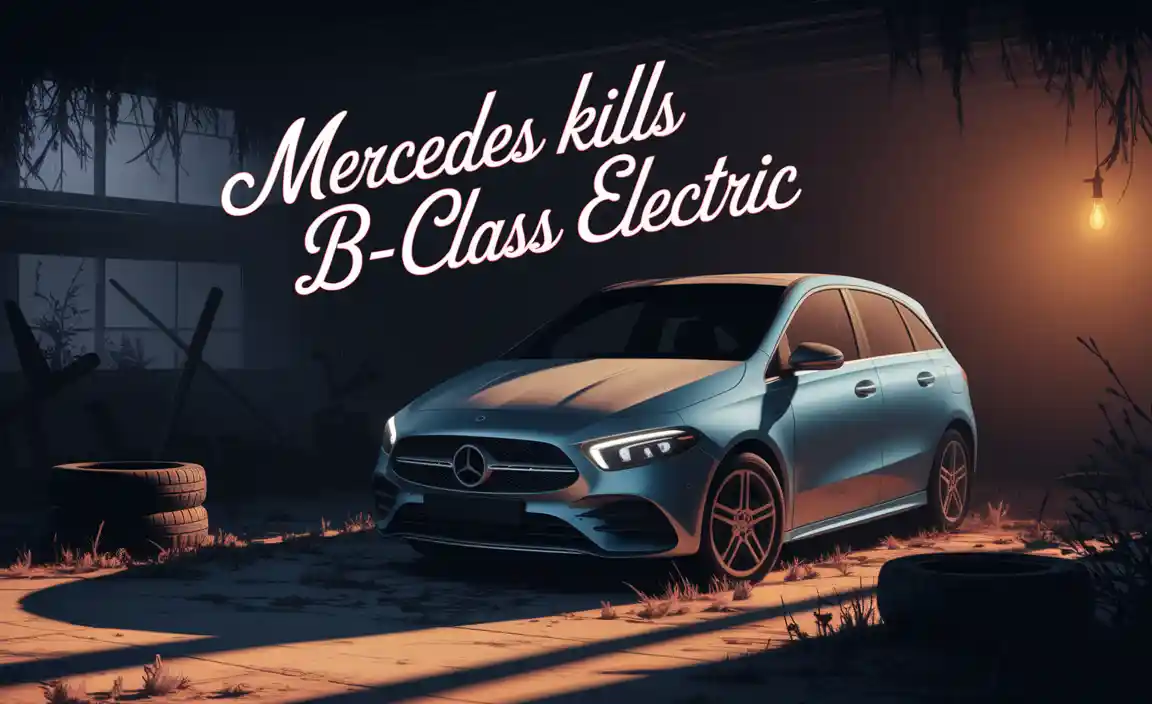
Mercedes didn’t “kill” the B-Class Electric Drive with one decision—it faded out due to limited range, poor infrastructure support, lack of long-term planning, and rapidly evolving market expectations. The B-Class EV was more of a learning experience than a serious market contender.
1.Limited Driving Range
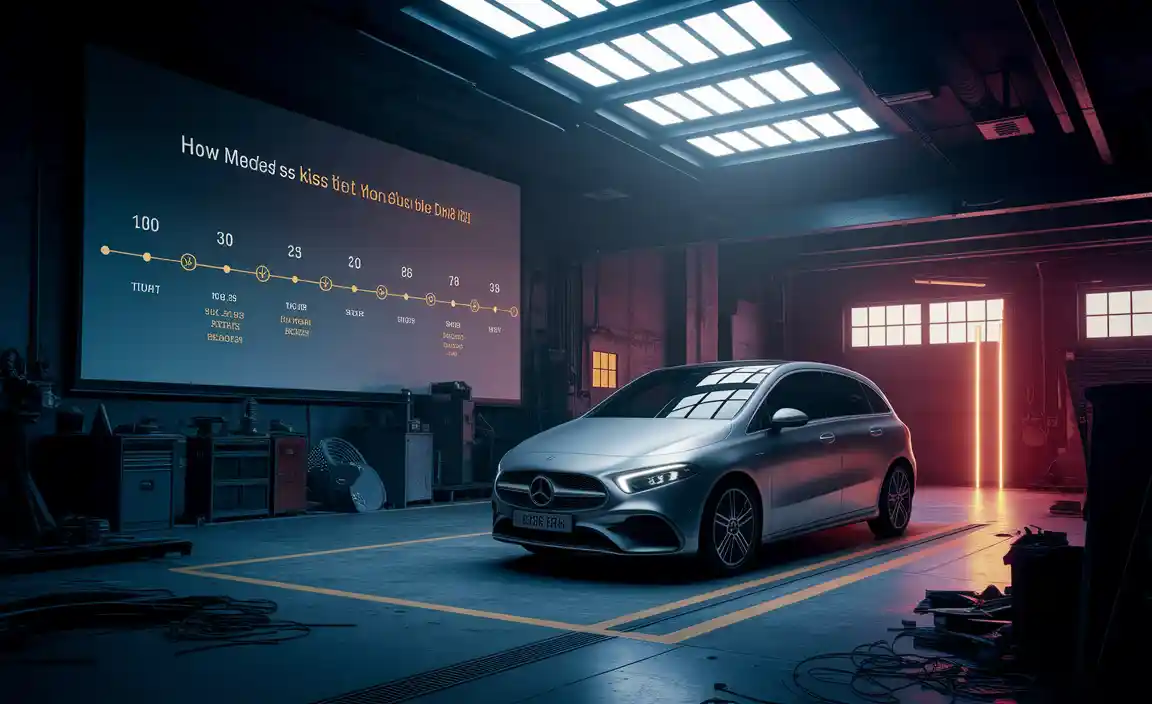
While the B-Class Electric offered a claimed range of about 87 miles, real-world numbers often fell short—especially in colder climates or when using climate control. As electric vehicles evolved, consumers expected 200+ miles, and the B-Class just couldn’t keep up.
2.Lack Of Fast Charging
Unlike competitors such as the BMW i3 or Tesla Model S, the B-Class EV didn’t support DC fast charging. A full charge took hours on standard chargers, which frustrated users needing quick top-ups.
3.High Price For Modest Returns
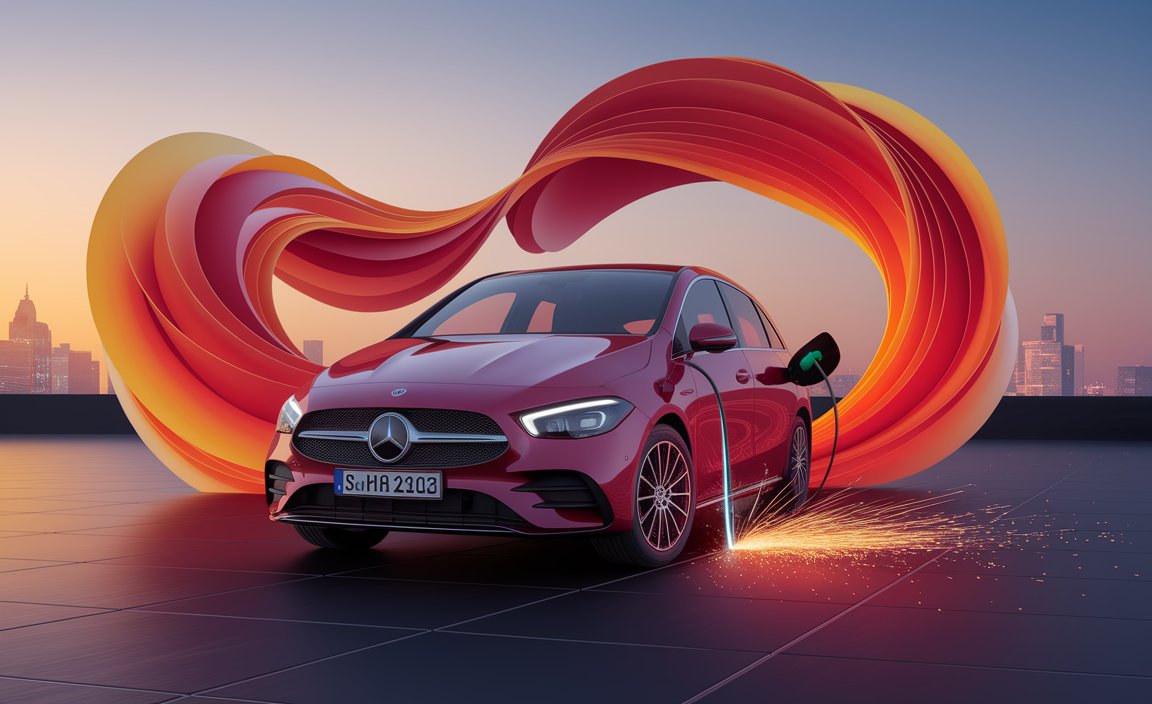
The B-Class sat awkwardly between categories: more expensive than compact EVs like the Smart ForTwo Electric Drive, but not as compelling as a full-size Tesla. It wasn’t clearly premium, nor was it competitively priced.
4.Stiff Competition
By 2015, brands like Tesla Motors, BMW, and Nissan were already offering more compelling electric options. The i3 had better range and design, while Model S was leading in performance and infrastructure.
5.Conservative Ev Strategy
Mercedes-Benz treated the B-Class EV as a side project. Despite using Tesla-sourced tech, the B-Class ED lacked serious investment. It felt like a compliance car rather than a bold move into EV territory.
6.No Upgrade Path Or Facelift
While rivals got frequent updates, the B-Class Electric remained mostly static. Even the 2015 range-boosting package added only marginal improvements—hardly enough to re-energize sales.
7.Changing Consumer Preferences
As EV buyers leaned toward SUVs, crossovers, and stylish tech-forward vehicles, the compact MPV-style B-Class began to feel dated. It couldn’t excite customers who wanted both performance and futuristic design.
8.Mercedes’ Bigger Shift To Eq Line
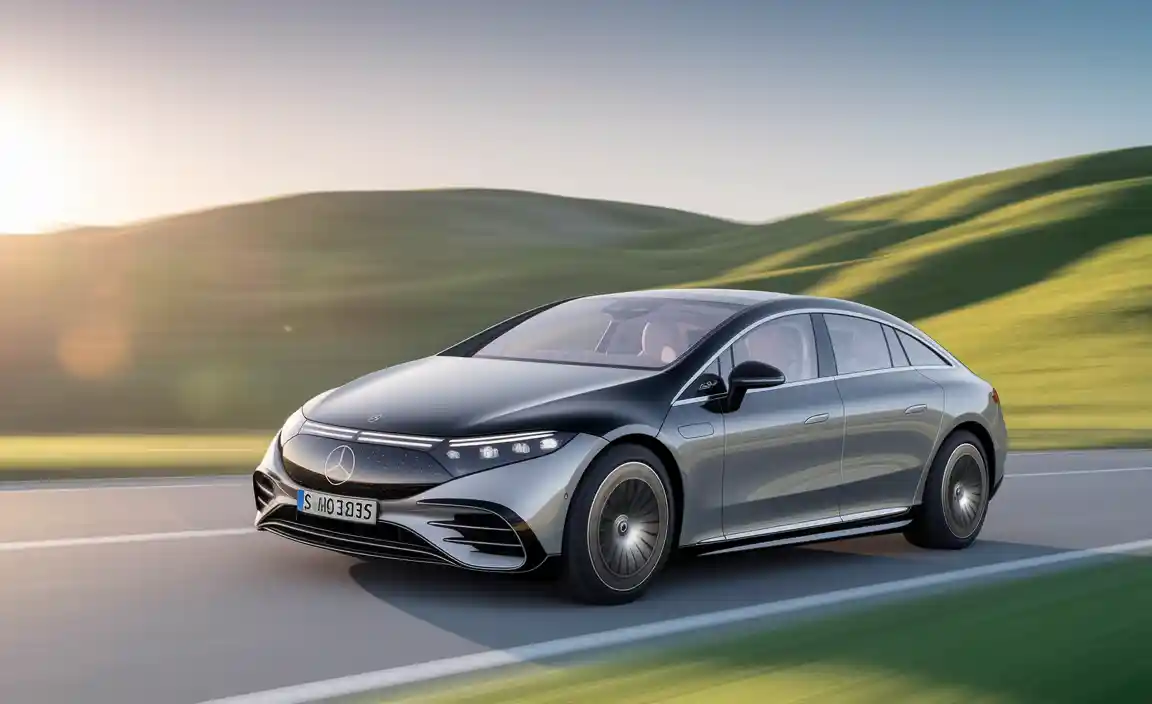
Behind the scenes, Daimler AG was preparing the EQ sub-brand. That left the B-Class Electric without a long-term role. Mercedes wanted a clean slate, and the B-Class didn’t fit into that vision.
9.Environmental Compliance Over Innovation
The B-Class EV felt more like a regulatory move than a revolutionary product. With emission-free driving requirements looming in California and Europe, it served its purpose, but not with long-term ambition.
10.No Global Appeal
Its appeal was limited mostly to Los Angeles, select U.S. cities, and parts of Europe. With no wide-scale global rollout, Mercedes-Benz never fully backed it as a mass-market electric vehicle.
Emphasis On Safety Features
True to brand, the electric B-Class came packed with safety tools. Collision Prevention Assist, Adaptive Brake Assist, and Active Parking Assist were all standard. Mercedes wasn’t just chasing range; it was packaging EV with the same protection you’d expect from any of their cars.
That focus gave peace of mind, especially to early adopters new to battery-powered cars. But even with this strong safety foundation, the B-Class EV still faced uphill challenges.
Eco-Friendly Initiatives
Mercedes hyped the B-Class Electric as a smart step toward sustainability. It offered regenerative braking, recycled interior elements, and a platform supposedly ready for future tech. On paper, it was a green dream.
With other Mercedes-Benz cars still burning fuel, the B-Class EV was like a scout in unknown terrain—hopeful but isolated. Even the company’s messaging felt cautious. It was as if Daimler AG had one foot on the accelerator and the other nervously hovering over the brake.
Key Challenges Faced By B-Class Electric
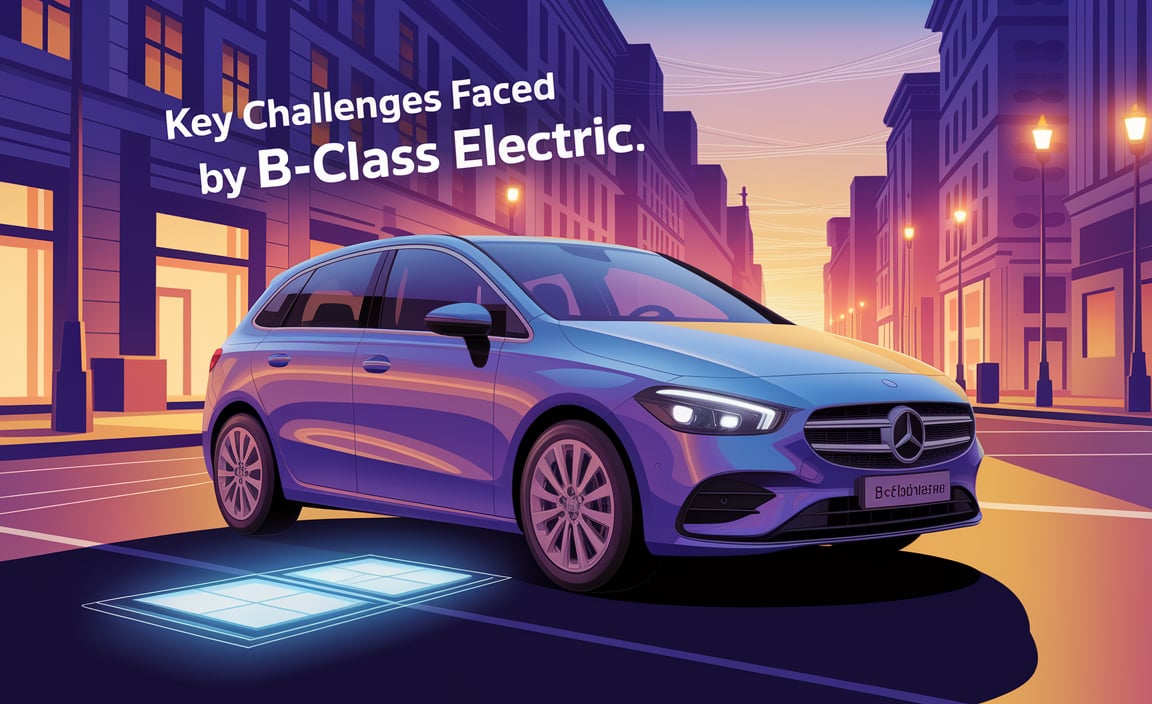
Where things got tricky was with the battery pack and the numbers it produced. Officially, the B-Class ED could manage about 87 miles per charge. In the real world, that often dropped, especially in cold weather or when using climate control.
And while Tesla provided the heart, Mercedes limited it. There was no range extender, no rapid charge tech, and no flexibility. The electric car was quick, but lacked stamina. As more capable rivals emerged, the B-Class looked increasingly outdated.
Limited Driving Range
Compared to the BMW i3, or even the aging Smart For Two Electric Drive, the B-Class’s range looked average. Mercedes was pitching luxury, but EV buyers wanted numbers. An electric current buzzes with potential, but when the drive stops short of 100 miles, potential doesn’t cut it. Battery test results were good, but consumers needed more distance, not just specs.
Extended Charge Times
The B-Class EV used a 10 kW onboard charger, which wasn’t terrible, but without DC fast charging, it lagged behind. A full charge took hours. Electric driving is exhilarating—until you’re stuck at a charging point for too long.
It lacked future-proof tech. No modular battery, no advanced cooling, and no serious roadmap for upgrades. And with the Tesla Model S paving the way for fast, long-range EVs, Mercedes’s offering began to feel like a placeholder.
Market Position And Competition
The B-Class Electric Drive sat in a weird spot. More expensive than a BMW i3, but not as exciting as a Tesla Model S. More premium than the Smart Fortwo, but not compelling enough to sway a new buyer.
Even internally, Mercedes was exploring hydrogen, hybrids, and electric vehicle concepts under other names. The B-Class EV was never center stage. It became clear: this wasn’t the brand’s big electric leap.
Attempted Solutions And Modifications
In 2015, Mercedes launched a range-boosting package, which included tweaks to software and tire specs. But it wasn’t revolutionary. It added marginal gains—enough to say “we’re listening,” but not enough to change the game.
Minor modifications like new striking bumpers and interior options were offered in Europe, but the core issue remained—range. And without a facelift or real production scale-up, it drifted quietly into irrelevance.
Industry Advancements And Shifts
Meanwhile, other automakers were charging ahead. Tesla Motors dominated headlines. Nissan pushed Leaf sales. And even newcomers were experimenting with electric turbochargers and multi-motor platforms.
Mercedes had started talking about the EQ line and advanced electric powertrain designs. The B-Class EV was quickly becoming yesterday’s news. It was like comparing your old MP3 player to a smartphone—still functional, but missing the magic.
Market Trends And Consumer Preferences
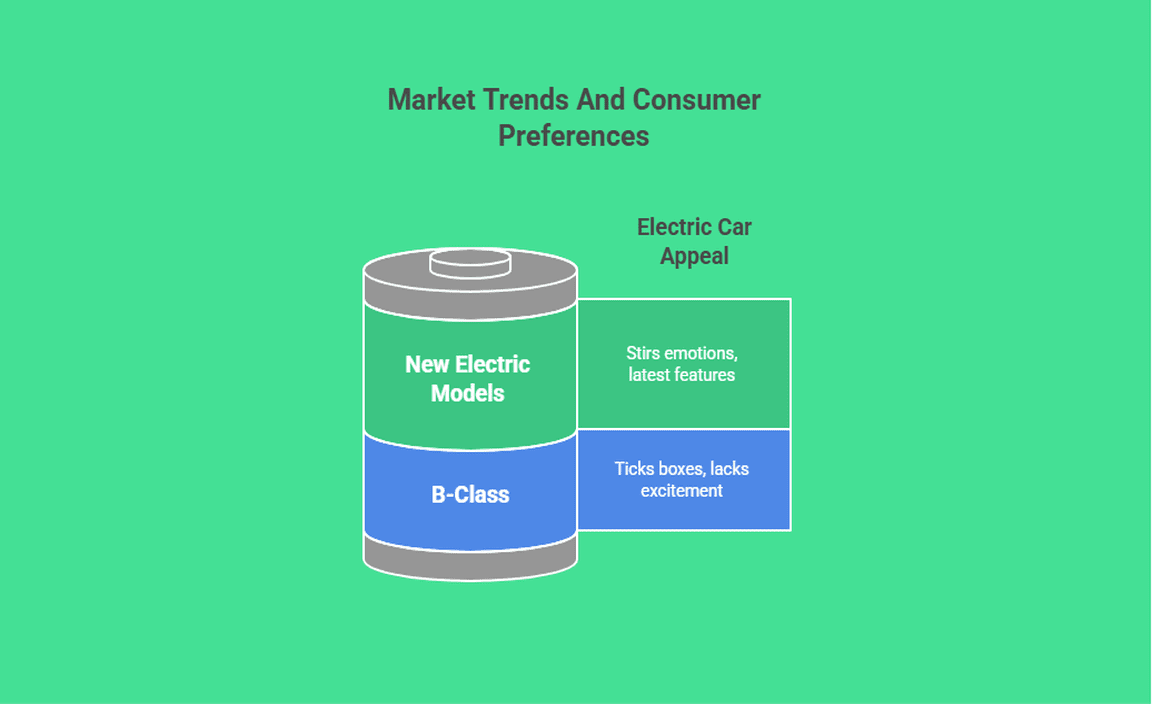
The rise of new electric models shifted expectations. Consumers wanted more than just eco-conscious choices—they wanted style, range, tech, and soul. The B-Class offered utility but not excitement.
As trends favored crossovers and SUVs, the compact MPV look of the B-Class felt dated. Buyers wanted the latest, and the B-Class EV wasn’t it. Electric cars needed to stir emotions, not just tick boxes.
Broader Automotive And Environmental Context
Zoom out, and the electric B-Class also fell victim to a bigger puzzle. Regulations in Europe were tightening. Climate pledges were evolving. But the shift to EV wasn’t just about reducing emissions—it was about redefining what cars meant to people. Add to that the global sale of public lands and changing off-road enthusiast habits, and Mercedes needed to pivot. They had to think bigger than one EV hatchback.
Conclusion
The fall of the Mercedes B-Class Electric Drive wasn’t about a bad car. It was about timing, ambition, and shifting markets. With its electric motor and roots in Tesla tech, it could’ve been a trailblazer.
But limitations in battery life, charging, and market support held it back. As the German automaker pushed ahead with the EQ series, the B-Class EV became a stepping stone, important, but forgotten.
And in the end, the story isn’t about failure—it’s about evolution. Mercedes learned, adjusted, and moved forward. The future may be EQ, but the electric B-Class was the first true whisper of change.
Frequently Asked Questions
1.Is The B-Class Electric Drive Still In Production?
No, Mercedes-Benz has discontinued the B-Class ED as part of its shift toward the EQ electric lineup.
2.How Far Could The B-Class Electric Drive Go On One Charge?
It offered around 87 miles per charge, though actual range varied depending on conditions.
3.Was Tesla Involved In The B-Class EV?
Yes, the electric motor and battery pack were sourced from Tesla during the development of the B-Class ED.
4.Why Did Mercedes Discontinue The Electric B-Class?
Limited range, slow charging, and growing competition made it less appealing over time.
5.How Does The B-Class EV Compare To The BMW I3?
The BMW i3 had better range and a more futuristic design, making it more attractive to many EV buyers.
6.Did The B-Class EV Support Fast Charging?
No, it did not support DC fast charging, which became a major limitation as the market advanced.
7.What Kind Of Safety Features Did The B-Class EV Offer?
Standard features included Collision Prevention Assist, Adaptive Brake Assist, and Active Parking Assist.
8.Was There A Plug-In Hybrid Version Of The B-Class?
No, Mercedes never released a plug-in hybrid B-Class, focusing instead on the fully electric variant.
9.How Was The Driving Experience Of The B-Class EV?
Smooth and quiet, with quick acceleration, but it lacked the excitement and range of newer models.
10.What Replaced The B-Class Electric Drive?
The EQ family, particularly models like the EQA, became Mercedes’s new focus in the electric space.